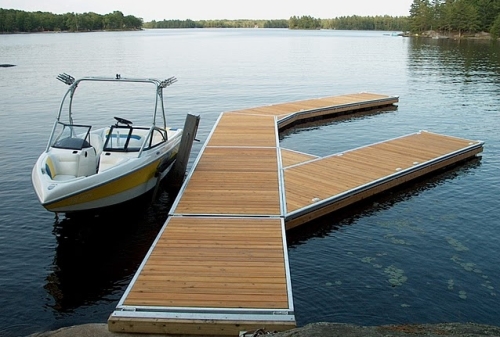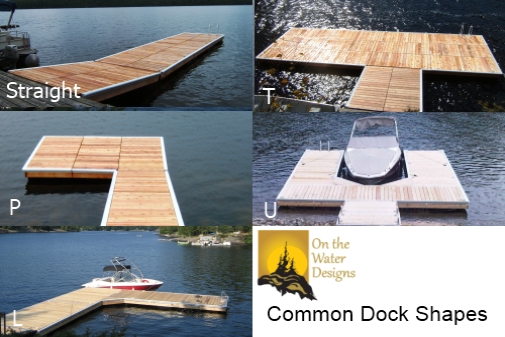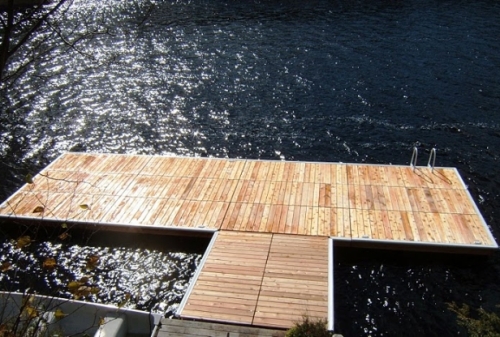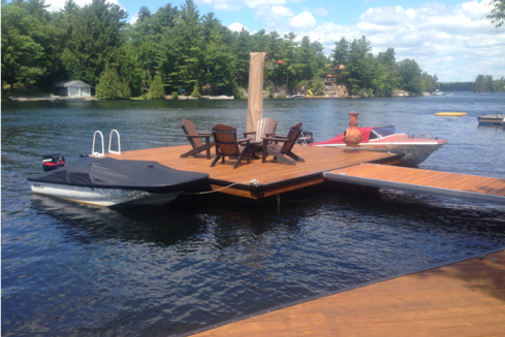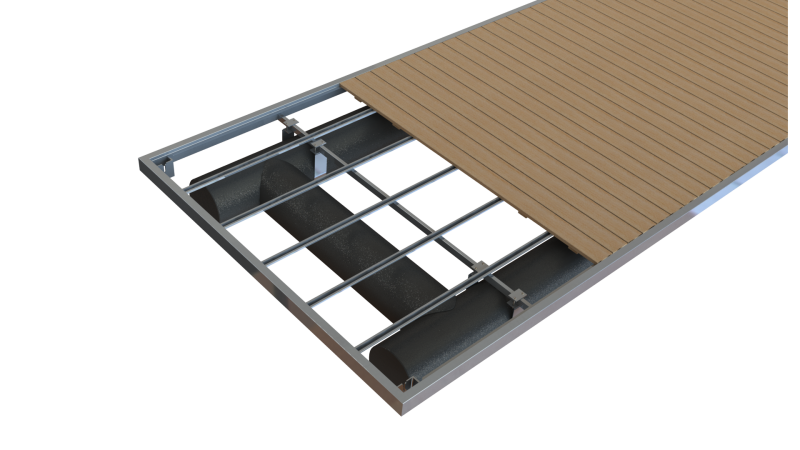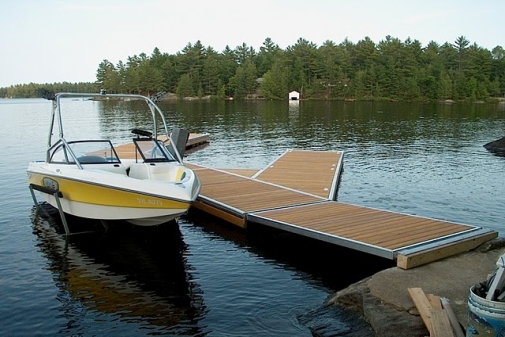Floating Docks are ideal for deep or fluctuating water conditions. A big advantage of a floating dock system is it stays at a constant height above the water which is ideal if you keep a boat moored to it.
Choosing a Floating Dock Size
When choosing a floating dock it is important to have an idea what you plan to use it for. Just looking for a small dock to get out to your boat and do most of your relaxing on shore? You may be content with a 6′ wide system. If you are planning to spend some of your relaxing time on your new dock you will want to consider one with more stability such as an 8′ or 10′ wide dock.
The way to think about it is like this: Think of the difference between standing up in a canoe, and standing up in a pontoon boat. The pontoon boat is always more stable and this is mainly due to the difference in size.
Choosing a Design
When it comes to designs, you are really only limited by your imagination. Most clients, however, find one of a few common designs to be very practical for their needs.
Straight – This simple design allows for multiple mooring locations and keeps cost and complexity to a minimum
P Shape – Our most common design, this is great if you want to have an area for some chairs but only need a smaller walkway back to shore. The P Shape allows you to save some money closer to shore and spend it where it will have maximum use.
L Shape – Similar in design to th P Shape, the L Shape creates up to 3 spaces for mooring boats
T Shape – Commonly used in smaller rivers where you don’t want to extend your dock too far out into the water. The T Shape allows one bigger mooring location with easy access and a couple protected locations for smaller craft like canos & kayaks.
U Shape – This design offers great protection to your boat and leaves two other spots open for additional boats or visitors. Typically one side of the U is small and used just for boat access. The other side is large enough for chairs and entertaining.
Winterizing Your Floating Dock
Floating docks can commonly be left in the water over the winter, but not all locations are suitable. Every dock built by On the Water Designs is capable of being frozen and thawed but damage may occur if your dock ends up down the lake, or up on shore in the spring.
The key is to understand your ice conditions. If you are in a somewhat sheltered area like a bay where the ice just freezes and thaws you shouldn’t expect any trouble. If, however, you find a lot of ice movement in the spring either flowing past or piling up on shore you would be best to relocate the dock or remove it.
Dock Installation
A typical floating dock installation includes securing the ramp to shore using either bedrock hardware or attaching to a concrete pour or an existing structure. Anti-sway cables are attached for additional stability. Each floating dock section typically has a set of anchors and chain crossed below the dock in an X to reduce side to side sway.
Many clients choose to have a floating dock installed professionally the first time but find they can maintan their systems on their own after that.


